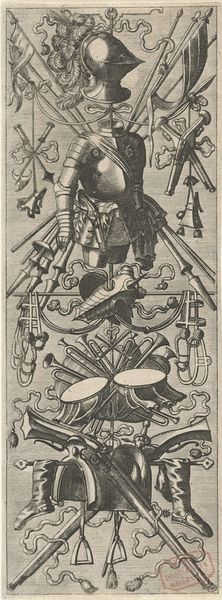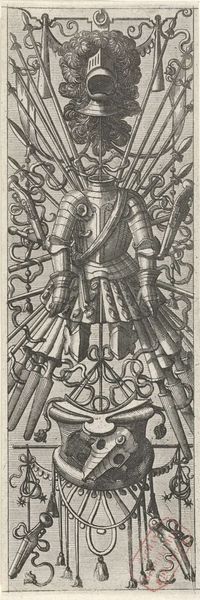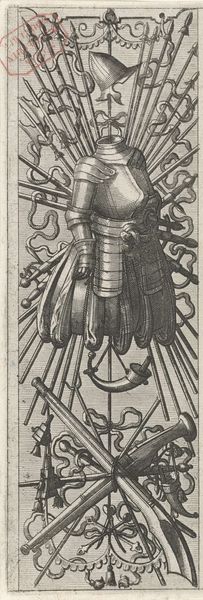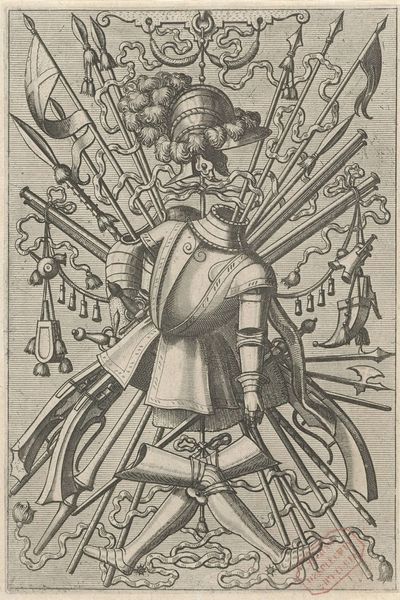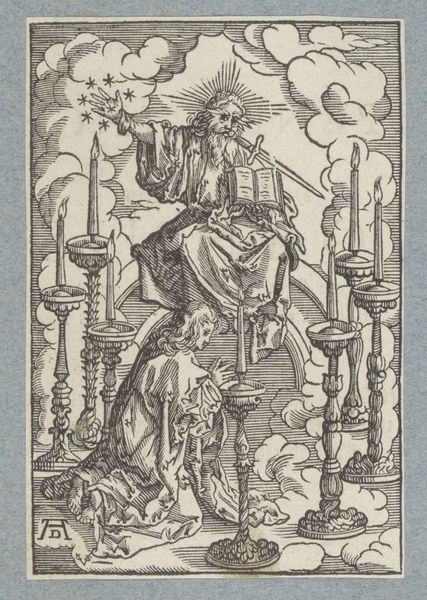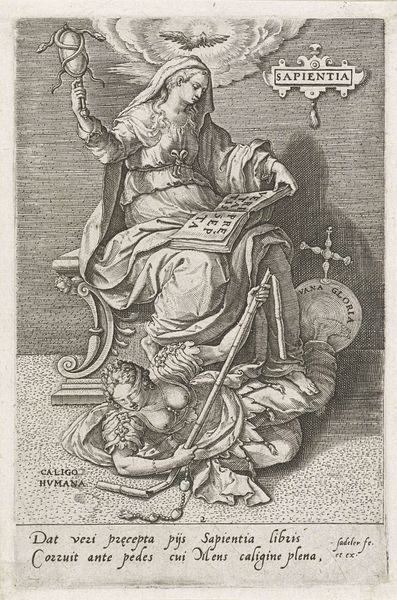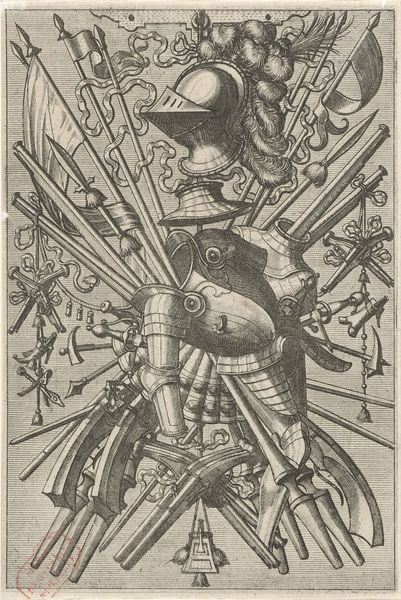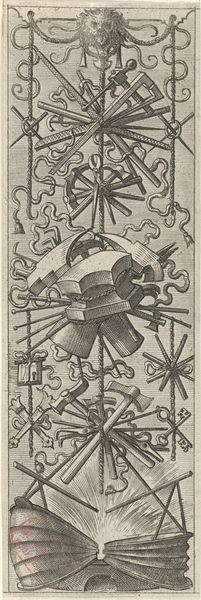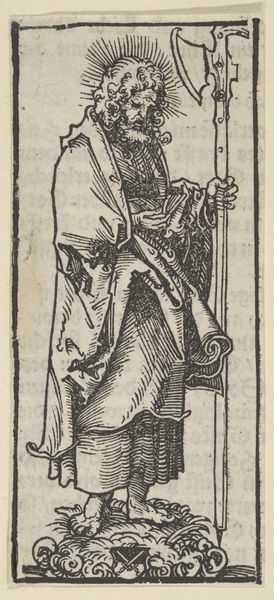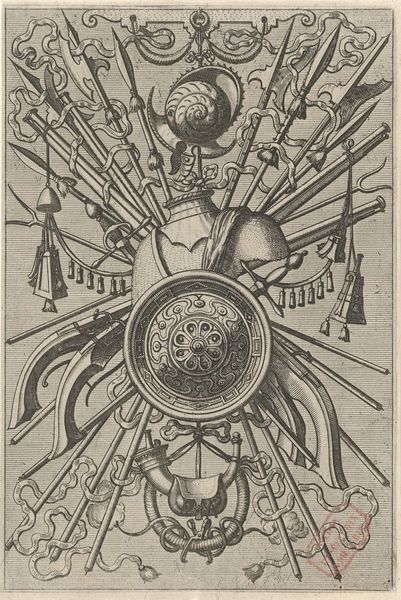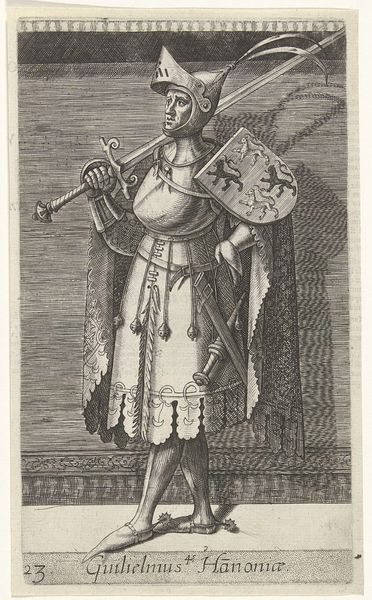
print, intaglio, engraving
# print
#
intaglio
#
11_renaissance
#
geometric
#
line
#
history-painting
#
northern-renaissance
#
engraving
Dimensions: height 249 mm, width 92 mm
Copyright: Rijks Museum: Open Domain
Curator: What strikes me immediately about this engraving from 1572 is the sheer accumulation of objects. It's almost claustrophobic. Editor: You've hit on something interesting. This intaglio print, "Wapentrofee met bovenaan een helm" or "Weapon Trophy with a Helmet Above", attributed to Johannes or Lucas van Doetechum, speaks volumes about the glorification of military prowess and the visual language of power in the Northern Renaissance. Curator: Power definitely. But it's a power built, it seems, on the instruments of war. Look at how meticulously the lines detail each weapon – the spears, swords, even the helmet plumes seem ready for conflict. How much of this is a true record and how much propaganda? Editor: Precisely! Consider the historical context: the late 16th century was a period of intense religious and political upheaval. The Dutch Revolt against Spanish rule was in full swing. These kinds of images, often commissioned by those in power, served as powerful visual tools, shaping public perception of conflict and heroism. Curator: So, these intricate details...the specific gleam of the metal...it's all designed to project strength and invincibility? Editor: Absolutely. It's not just about representing weapons. It's about crafting an image of unyielding authority and might. And the fact that it’s a print, means it was easily reproducible, disseminating these ideas widely. How interesting to note the interplay between graphic strategies and political strategy. Curator: I was struck by the fact it feels both incredibly detailed and rather cold. Perhaps that’s the intention— to show weaponry stripped from their human usage and simply put on display, celebrating military achievements. This imagery creates a sense of almost terrifying efficiency. Editor: It’s a demonstration, quite literally. A testament to human capabilities, good or bad. Curator: Thank you for offering an insight into the social complexities. It certainly changed how I see the engraving— beyond simply lines and textures, as a complex tapestry of its time. Editor: Likewise, considering the form allowed us a lens to explore wider historical contexts— it brings new meaning to this work as a powerful reminder of how art and history often intersect.
Comments
No comments
Be the first to comment and join the conversation on the ultimate creative platform.
